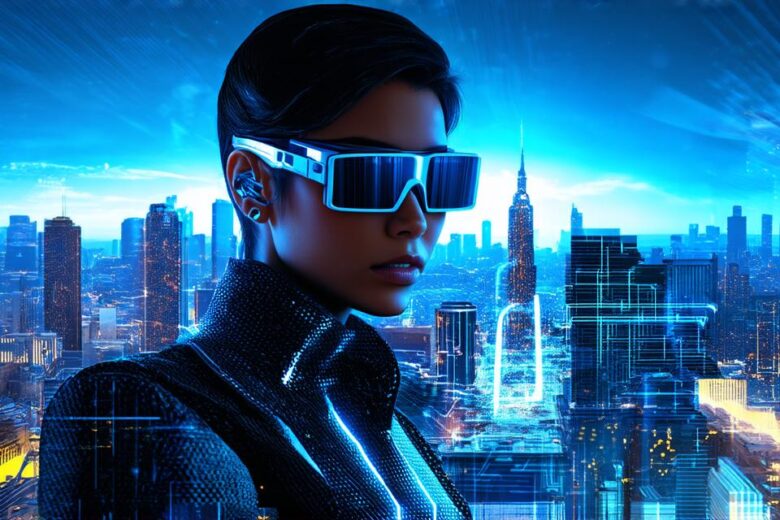Introduction
Augmented reality (AR) software is becoming increasingly popular, as it allows users to enhance their real-world experience with digital information. It has numerous applications across different industries, including entertainment, education, healthcare, and manufacturing. In this article, we will explore the ways in which AR software changes the way you see the world and how it can be used by AR developers to create immersive experiences for their users.
The Impact of Augmented Reality on Our Perception
AR software allows us to overlay digital information onto our real-world environment, giving us a new perspective on the world around us. This can have a significant impact on our perception and understanding of the world. For example, in the field of education, AR software can be used to enhance students’ learning experience by providing them with interactive 3D models of complex concepts.
One such example is the use of AR in biology classes. Students can use AR apps to explore the anatomy of animals and plants in a more engaging and interactive way. By overlaying digital information onto their real-world environment, they can gain a better understanding of how these organisms work and function.
Another example is in the field of manufacturing. AR software can be used to provide workers with real-time information about production processes, such as assembly instructions and quality control checklists. This can improve efficiency, reduce errors, and increase safety on the factory floor.
The Role of Augmented Reality in Entertainment
AR software has also revolutionized the entertainment industry, allowing users to immerse themselves in virtual worlds and engage with digital content in new and exciting ways. One example is the use of AR in gaming. Games can be brought to life in a more immersive way by overlaying digital information onto the real world, creating a sense of presence and interactivity that was previously impossible.

AR has also been used in the field of advertising and marketing. Brands can use AR apps to create interactive experiences for their customers, such as virtual product demonstrations or immersive brand experiences. This can help to engage customers and create a more memorable brand experience.
Case Studies: Real-World Examples of Augmented Reality in Action
There are numerous examples of AR software being used in real-world scenarios. One such example is the use of AR in retail. IKEA, for example, has created an AR app that allows customers to visualize how furniture would look in their home before making a purchase. This has been shown to increase customer satisfaction and reduce return rates.
Another example is the use of AR in healthcare. Medical professionals can use AR software to overlay digital information onto patients’ bodies, allowing them to diagnose and treat conditions more accurately. For example, an AR app called “EndoAR” allows surgeons to visualize the location of blood vessels and other organs during surgery, reducing the risk of damage and improving patient outcomes.
The Future of Augmented Reality: Opportunities and Challenges for AR Developers
As AR technology continues to advance, there are many opportunities for AR developers to create innovative and engaging experiences for their users. However, there are also challenges that need to be addressed in order to fully realize the potential of AR software.
One challenge is the need for standardization across different AR platforms and devices. Currently, there is no single standard for AR software, which can make it difficult for developers to create cross-platform experiences. There is a need for greater collaboration between industry stakeholders to develop a common standard for AR software that can be used across different platforms and devices.
Another challenge is the need for more advanced AR hardware. While current AR devices are capable of delivering impressive experiences, they still have limitations in terms of processing power and battery life.
